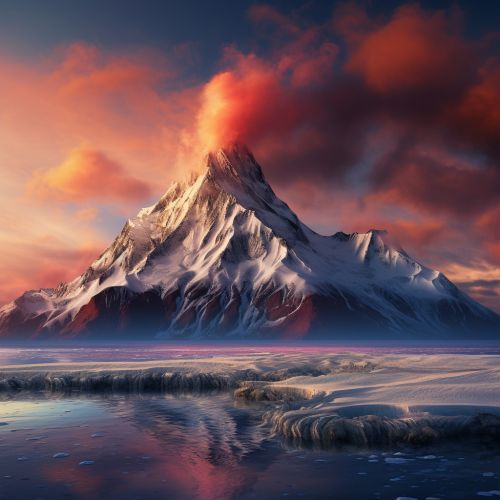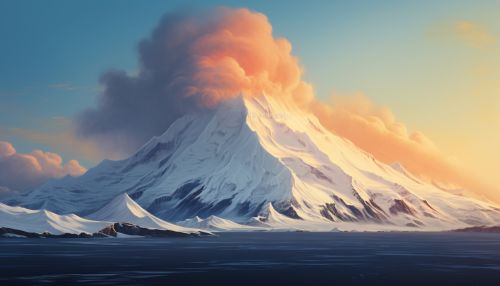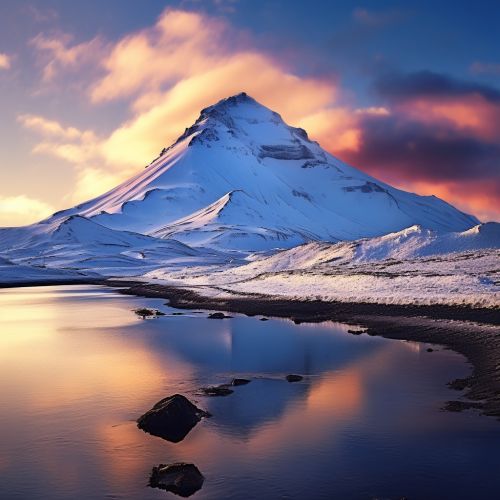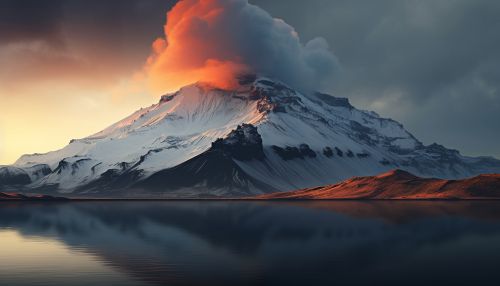Glaciovolcanism
Overview
Glaciovolcanism, also known as volcanic glaciation, is a complex geological phenomenon that involves the interaction of glaciers and volcanic activity. This interaction can occur in various forms, such as the melting of glaciers due to volcanic heat, the eruption of volcanoes beneath ice sheets, and the formation of distinctive landforms as a result of these processes.


Geological Processes
Glaciovolcanism involves a range of geological processes, many of which are unique to this phenomenon. These include the formation of subglacial volcanoes, the creation of jökulhlaups (glacial outburst floods), and the development of distinctive landforms such as tuyas and table mountains.
Subglacial Volcanoes
Subglacial volcanoes, also known as tuyas, are formed when volcanic activity occurs beneath a glacier or ice sheet. The heat from the volcanic activity melts the overlying ice, creating a lake of meltwater. This water can exert pressure on the underlying magma, influencing the style of the eruption and the type of landform that is created.
Jökulhlaups
Jökulhlaups, or glacial outburst floods, are another common feature of glaciovolcanic activity. These occur when a subglacial eruption or geothermal heat causes rapid melting of a glacier, leading to a sudden release of a large volume of water. Jökulhlaups can be extremely destructive, causing widespread flooding and erosion.
Landform Creation
The interaction of glaciers and volcanoes can result in the creation of distinctive landforms. These include tuyas, table mountains, and pillow lava formations. Tuyas and table mountains are flat-topped, steep-sided volcanoes that are formed by subglacial eruptions. Pillow lava formations are created when lava erupts into water, causing it to cool rapidly and form a distinctive pillow-like shape.
Locations
Glaciovolcanism is most commonly observed in regions where there are both active volcanoes and extensive glaciers. These include parts of Iceland, Antarctica, and the Cascade Range in North America. In these regions, the interaction of glaciers and volcanoes has shaped the landscape and influenced the local ecology.


Impacts
The impacts of glaciovolcanism are diverse, ranging from the creation of unique ecosystems to the potential for catastrophic flooding events. The melting of glaciers due to volcanic activity can contribute to sea-level rise, while jökulhlaups can cause significant damage to human settlements and infrastructure. On the other hand, the unique conditions created by glaciovolcanic activity can support a range of specialised species and ecosystems.
Future Research
Despite the significant advances in our understanding of glaciovolcanism, many aspects of this phenomenon remain poorly understood. Future research in this field is likely to focus on improving our understanding of the processes involved in glaciovolcanic eruptions, the impacts of these eruptions on the surrounding environment, and the potential risks associated with glaciovolcanic activity.
